Venice Italy is an Italian city located in the northeast of the State. Venice, Venezia in Italian, is best known for its beauty, canals, architecture, and art. But there is more! This small city founded in the middle of a lagoon has been one the most powerful European States for several centuries, giving birth to a culture and lifestyle that are incredibly unique. Often called the Serenissima, after the successful government which ruled the city, Venice has been for centuries the favourite city of artists and inventors. Many habits, words, and things currently part of our daily life were born in this small but immensely important city.
You’ve already seen thousands of pictures, videos, and movies about Venice, right?
But, maybe, you now feel it’s time to look for more information about this incredible city.
Here’s our promise:
by reading our fun article, you will know more about Venice than 99% of all travellers!
So, let’s start with the first and most important question:
What is Venice Italy?
Venice is a city located in the middle of a shallow lagoon in the northeast of Italy. According to a legend, its foundation took place on the 25th of March 421 C.E.
Since 1866 C.E., Venice is part of the Italian State.
In a hurry or looking for something specific? Use the interactive index below to jump to sections of your interest
Interactive Index
Or you might be looking for
History, Geography, and facts about Venice Italy
Where, when, how? These are the first questions we must answer when speaking about Venice!
Jump to:
- Where is Venice?
- How old is Venice?
- What are the origins of Venice?
- Was Venice always part of Italy?
- When was Venice built?
- How was Venice built?
- How did Venice look in the past?
- Now, how many canals are there in Venice? And how many bridges?
- How big is Venice?
- How many people live in Venice?
- Venice was and is small. So, how did Venice become so rich and powerful?
- What is the Serenissima?
- How was the Government of Venice structured?
- Which are the other names of Venice?
Where is Venice, Italy?
Venice is located in the North East of Italy, in the middle of the Venetian Lagoon at the end of the Adriatic Sea. Venice, called Venezia in Italian, is entirely surrounded by water and crossed by hundred of canals.
Are you wondering what Venice looks like from above? Click the following link to see an image from the International Space Station of the Serenissima and its Lagoon.
How old is Venice, Italy?
A legend dates the birth of Venice back to 421 C.E. More precisely, to the 25th of March, 421.
The growth of the city, however, only started in 812 C.E., after Carloman’s failed attempt to conquer the Venetian lagoon.
In other words, Venice is over 1.200 years old!
Want more tips, tools and stories from Venice, Italy?
We're on a mission to make it easy and fun to discover and support the authentic Venice. Try our email and see for yourself!
What are the origins of Venice?
The Venetian Lagoon is a natural formation from around 4.000 BCE. Since its beginning, populations inhabit due to the presence of fishes and birds which attracted fishermen and hunters.
The first significant settlements in this area were Altino, Torcello, and Metamauco.
Since 697, the area of the Venetian Lagoon became an independent dukedom of the Byzantine Empire, or Eastern Roman Empire: a Duke, nominated by Byzantium, was in charge to administrate the Venetian Lagoon.
After escaping an assault by Charlemagne in 810 CE, in 812 CE Venetians moved the centre of their political power to Rivus Altus, now Rialto, which soon became the heart of a new city: Venice!
Was Venice always part of Italy?
Venice became part of Italy only very recently, in 1966.
Since 697C.E., in fact, Venice was a free and independent Republic for 1.100 years. This makes the Venetian Republic the longest-lasting form of Government in the world, ever.
After 1.100 years, the Venetian independence ended in 1797: in May 1797, the Venetian Republic surrendered to the French army.
Several rulers took control of Venice in the 70 years following the end of the Venetian Republic, until Venice became part of the newly formed Italian State.
The independent, foreign and Italian Governments in Venice
Over 13 centuries, the city of Venice, Italy, has had few but very different Governments. At first an independent Government, the Serenissima, then a phase of foreign rulers, and at last it became part of the Italian State.
Here’s a quick overview of the Government that rules Venice since its birth:
- From 697 (812) until 1204: Venice and its domains were independent yet under the protection (or watch) of the Byzantine Empire.
- From 1204 until 1797: Venice was entirely independent and the most influential power in the Mediterranean area.
- May 1797 – January 1798: In May 1797, Napoleon overthrew the Venetian government. Venice became a French possession.
- January 1798 – March 1805: In March 1805, France handed over Venice to the Austrian Empire. Venice became an Austrian possession.
- March 1805 – April 1814: In March 1805, Venice was handed back to France. Venice becomes a French possession again.
- April 1814 – March 1848: After Napoleon’s death, Venice is returned to the Austrian Empire. Venice becomes an Austrian possession.
- March 1848 – August 1949: Venetians rebel against the Austrian domain and take over their city. Venetians create the Republic of Saint Mark.
- August 1949 – October 1866: In August 1949, the Austrian Empire overcomes the Venetian resistance. Venice is, again, an Austrian possession.
- October 1866 – Today: In October 1866, Venice becomes part of the Italian Reign. Today Venice is part of the Italian Republic founded in 1946.
When was Venice, Italy built?
The first settlements of what became Venice started in 812 CE. Since then, and until the end of the Venetian Republic in 1797, Venetians built most of what can be seen today in Venice.
Foreign rulers that took over Venice after its fall in 1797 built two main bridges crossing the Grand Canal (the most important canal in Venice) and a few buildings…while destroying many others, particularly churches.
Are there modern buildings in Venice?
Venice is a fully urbanized city built on small islands and it has no more space for new buildings.
This is also why, in order to follow the latest trends and fashions of their time, wealthy inhabitants constantly renovated and changed the facades of their palaces on the Grand Canal!
As a consequence, many prestigious palaces in Venice have a relatively modern style, which dates to “just” 2-3 centuries ago.
There are, however, a few areas that have been built in the second half of the XX Century, well after the end of the Serenissima, the Venetian Republic.
Some of those areas in Venice are the “Baia” and the “Safa” in the district of Cannaregio, and Santa Marta in the district of Dorsoduro. The Train Station and Piazzale Roma also date to more recent times.
Giudecca and Sacca Fisola, two islands that are part of Venice, also host several buildings built in the XX Century.
How was Venice in Italy built?
Despite what you might have heard before, Venice wasn’t built on water.
Yes, Venetians did not build Venice on water, nor did they build their city on an island.
In fact, Venetians built their city on 116 little islands!
By mere coincidence, these islands were in the middle of the Venetian Lagoon and very close to each other.
Venetians, however, had to come up with an idea to be able to build their homes on such a soft, sandy and muddy ground…
How were buildings in Venice built?
To erect a new building on sandy Venetian ground, Venetians would hammer two rows of piles all along its perimeter. After that, they would fill the space between these rows with mud.
The following step was to remove the water and mud between the two rows of piles and let them partially dry.
After that, it was necessary to plant more long piles of wood close to each other, deep into the soft ground. The piles had to be long enough to reach the firmer soil several meters below the surface.
After planting the piles, Venetians would cut the length protruding from the ground. This way, piles were all at the same level.
The following step was to fill the space between piles with stones and concrete.
Finally, Venetians placed big wooden plates on the piles’ heads, creating the ground floor upon which the rest of the building would be built.
How did Venice look in the past?
Unsurprisingly, the general aspect of the city changed over time.
In the past, Venetians built streets and squares without flooring. Moreover, locals often used the squares as animal and vegetable gardens. Today, Venetian squares are still called “campi,” which means “fields” in Italian, while other cities call their squares “piazze”.
For many centuries Venetians needed to use their boats to move through the city. Only in later centuries, did locals build hundreds of bridges to connect the 118 islands that make Venice.
A further change regards the number of canals. In the past, in fact, there were several more canals. Over time, some canals were filled in, or “interrati” in Italian, to make more prominent pedestrian areas and to increase practicability.
This process took place rarely during the Serenissima. But after its fall and the subsequent Austrian domain, the new rules filled in 28 canals in just 50 years, from 1816 to 1866.
You can see how Venice, Venezia in Italian, looked like in the past thanks to the paintings of Canaletto. You can find several Canaletto paintings on the Google Arts & Culture website.
How many canals are there in Venice Italy? And how many bridges are there?
People often ask “How many canals are there in Venice?” or “How many bridges are there in Venice?”.
However, we also know that you’re curious about its many alleys and churches. Therefore, we decided to collect all the numbers about its many canals, bridges, alleys, and churches!
Ok, so how many are there in Venice?
- There are 2650 alleys in Venice, for a total of 157km! The smallest alley measures just 52cm.
- In Venice, there are 182 named canals (that can eventually break down into a few more canal segments)
- There are 435 bridges in Venice. Of those, 72 are private bridges.
- Finally, in Venice, there are 139 churches. However, of those only 88 are still operating, meaning that priests hold mass at least once a week. Many of the remaining churches have been converted into community buildings or are used for art exhibitions.
How big is Venice, Italy?
The whole surface of Venice measures 7,98 km² or 3,08 square miles. Yes, Venice is small.
To be more precise, 2 km² belong to the Arsenal and are a military zone with limited access. The “public” surface in the city is barely 6 km²!
How many people live in Venice Italy?
The number of people who live on the island of Venice dropped below 53.000 in February 2019.
In 1951, over 175.000 Venetians were living in Venice.
Venice was and is small. How did Venice become so rich and powerful?
Trades and the ability of the Venetians to program, organize and administrate their possessions, were the primary sources of the immense wealth and power of the Republic of Venice.
Venetians carried out with extreme attention the administration of the city, of the justice system, of the colonies, and of the commercial routes through the Government of the Serenissima.
Thanks to this careful and smart organization, the “small” city of Venice managed to compete with massive Empires for centuries.
What is the Serenissima?
“Serenissima” is one of the nicknames that was and is used to indicate the ancient “Republic of Venice,” which was known as “Serenissima Repubblica di Venezia.”
In Italian, Serenissima means “the most serene.”
How come?
Because this is how the Venetian Republic was perceived by locals and visitors, compared to most of the surrounding Empires and States.
Indeed, for 11 centuries Venice was the most serene place to live in and it fully deserves its name “La Serenissima Repubblicas di Venezia”, the Most Serene Republic of Venice.
How was the Government in Venice, Italy, structured?
The structure of the Government of the Serenissima changed over the first centuries. However, it remained unchanged from 1292 until the end of the Republic, in 1797.
The Great Council in Venice
The Great Council was an assembly made by all the Venetian aristocrats who were over 25 years old. It was the root of the power of the Venetian Government and counted on average over 1.000 members.
It was responsible for the election of every office in the Serenissima: the Doge, its Counselors, the Senate, the Council of Ten, The Council of the Wise, etc.
Il Doge, the Head of State in Venice
The Doge was the head of the Republic of Venice. His power, however, was minimal and he was always under the control of his Counselors.
The Doge's Counselors in Venice
Six people, each representing one of the six districts of Venice, worked as the Doge’s Counselors. The Counselors were elected every 8 months and, together with the Doge, they formed the Minor Council.
La Serenissima Signoria, the Serenissima's Lordship in Venice
The Minor council and the three chiefs of the Quarantia Criminal, or Justice Magistracy, formed the “Serenissima Signoria,” the Serenissima’s Lordship.
The Serenissa's Senate in Venice
While the Serenissima’s Lordship had to watch over the executive and legislative matters, all its actions were controlled and needed approval by the Venetian Senate, an assembly of over 120 people.
The Council of Ten in Venice
The Doge, his six counsellors, and 10 aristocrats made up the Council of Ten. The Council of Ten was a special council created to fight emergency situation such as coupes.
It had the right to condemn anyone to death, without appeal.
Venice's Inquisitors: the Three State Inquisitors council
Among the most powerful figures of the Venetian Government were the “Three State Inquisitors”.
The three State Inquisitors, which counted one member of the Doge’s Counselor and two of the 10 aristocrats forming the Council of the Ten, formed a secret council created to deal with extremely delicate situations and covert operations.
While the Three State Inquisitors did inform the Great Council about their decisions, if the information was not secreted, their resolutions could not be changed.
The high control that the various offices and councils had one over another, and the even greater complexity of the voting system, prevented any authoritarianism.
This organization of the Venetian Government has been a guarantee for the extreme stability, fairness, and efficiency of the Venetian Republic for 11 centuries.
Which are the other names of Venice?
Venice has been a superpower for centuries both in the Mediterranean area and in Europe. Its wealth, fame and constant innovations have made the city famous far and wide.
Therefore, it is unsurprising that Europeans called Venice with different names and nicknames.
What are the other names of Venice in other languages?
Venetians call their city Venessia (or Venexia) in Venetian and Venezia in Italian.
In English, the city’s name is Venice. Surprise!
Yes, we know you knew that…
French people call Venice Venise, while Germans, Danish, and Swedish people call it Venedig.
In Spanish, the city’s name is Venecia, in Portuguese Veneza, in Dutch Venetie, and in Polish Wenecja.
Russians call Venice Venetsija, the Chinese call it Weinisi, and the Japanese Vu-enetsu-ia.
In the past, Europeans often called Venessia also Venetia, its Latin name.
What are the nicknames of Venice?
The most known nickname of Venice is, by far, La Serenissima.
Venice has, of course, also other nicknames:
The Dominant, The Queen of the Adriatic, The City on Water, The City of Bridges, The City of Canals, The City of Masks, The Floating City, and The Tourist Maze
Everything about the soul of Venice: the Venetians
So far we focused on the origin of Venice, how it was built, and its most representative numbers and dates. Let us now speak about what makes Venice a city: its inhabitants!
Are there people living in Venice?
Yes, there are people living in Venice. Venice is a city and has been inhabited ever since its creation thousands of years ago.
Currently, Venice has less than 53.000 inhabitants (February 2019).
How are the people living in Venice Italy called?
People living in Venice and on the islands of the lagoon, each have a different name.
People living in Venice are Venetians or “Veneziani” in Italian. Those living on the island of Murano are “Muranesi.”
People living in Burano are “Buranelli,” and those in the nearby Torcello are “Torcellani.”
The island of the Lido is inhabited by “Lidensi,” the one of Pellestrina by “Pellestrinotti,” and the island of Chioggia by “Chioggiotti.”
People living in nearby Mestre are “mestrini.”
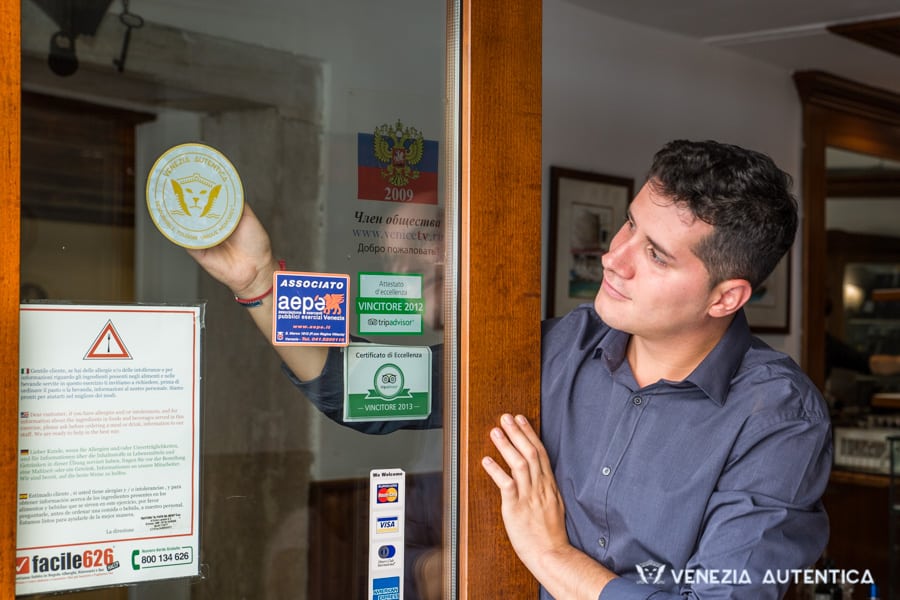
Unlock a discount at the best local businesses in Venice
Learn more about Venezia Autentica Friends' PassWhich languages are spoken in Venice?
Venice is an Italian city since 1866, and its official language is Italian. Therefore, every Venetian speaks Italian, and many Venetians also speak the local dialect, called “Veneziano” or “Venetian” in English.
Many Venetians, however, speak other languages besides Italian and Venetian. In fact, for decades, millions of tourists from all over the world, and Europe in particular, come to Venice every year. As a consequence, most Venetians work with tourism, and many have learned the basics of English, French, Spanish, and German.
Are there schools in Venice Italy? What about hospitals?
Of course, there are schools as well as hospitals in Venice!
Venice is small, but it is an important city. Therefore, it has most of those things you’d expect to find in any other major city.
In example, Venice has several schools, 2 hospitals, 2 universities, as well as firemen and police stations.
What do people living in Venice eat?
Italy has a strong food tradition and food culture, and most Italians eat freshly made food, whether they are at home or dining out.
Just like all Italians, Venetians have a diet that is primarily based on carbs and vegetables. However, since Venice is an island, the Venetian cuisine evolved to focus more on seafood and less on meat, compared to other Italian regions.
At home, Venetians will typically eat pasta and rice, especially risotto, fresh vegetables, soups, Italian dairy products, and fruits.
When Venetians go out, they usually avoid eating a simple pasta or risotto and will instead opt for a pizza in a pizzeria, fish dishes in an excellent local restaurant or finger food, “cicheti,” in a local wine bar.
What is the Venetian economy based on?
The overwhelming majority of the Venetian economy is based on tourism.
Tourism, however, has many aspects. The most significant difference between the two types of tourism that exist in Venice is the length of the stay of the tourists.
The length of the stay, in fact, profoundly influences tourists’ behaviour and, therefore, their impact on the city.
Day-trippers contribute significantly to the proliferation of mass-produced souvenir shops, low-price-low-quality restaurants, and supermarkets, which are partially replacing fresh food with takeaway meals.
Tourists who stay for two or more days tend to contribute more to the local economy by staying in hotels, going to restaurants, and taking the time to discover the high-quality artisanal production that still exists in the city.
What is so special about Venice Italy?
Many aspects contribute to make Venice such a special city.
It’s impossible to speak about Venice without mentioning its incredible History, its unique Culture, its centuries-old Traditions, and its marvelous Architecture. So let’s start…
Venetian History
For 1.100 years, from 696 C.E. to 1796 C.E., Venice has been an entirely independent city and the heart of the Venetian Republic.
In the course of such a long time, Venice always had its own language, coins, trades, traditions, statal organization, and groundbreaking inventions.
These facts are even more remarkable if we consider that Venice the city was capable of competing with entire countries, despite having on average only 150-200.000 inhabitants!
Venice’s power was so incredible that the city even managed to outgun Empires thanks to its incredible wealth, brilliant strategies, and unrivalled organization.
Venetian Culture
The cultural heritage in Venice is vital and can still be seen and felt amongst many Venetians of today. In fact, many Venetians know well, respect, and preserve Venetian culture, traditions, and way of life.
The respect of the Venetian culture and way of life, in particular, can be seen as a natural consequence of the geography of the city itself. One such example is the Voga alla Veneta or Venetian Rowing, which is part of the Venetian culture ever since the foundation of the city.
Venetian Rowing as part of Venetian Culture
Luckily, Venice has a relatively thriving rowing community that keeps Venetian Rowing alive.
There are dozen of rowing clubs all over Venice and on the islands of the Venetian Lagoon, which built a community of a few thousand members of any age, gender, and social background.
This community, which organizes several regattas throughout the year, is growing bigger every year. Part of its growth is thanks to several paladins who work hard to teach children how to row.
Venetian rowing isn’t just a sport, it’s an activity that is a deep part of the Venetian heritage and is even older than Venice itself!
Venetian Traditions
In its long history of independence, the longest in human history, Venice has developed a broad range of traditions and festivals that are peculiar to the city.
The most worldwide famous Venetian tradition is the Carnival of Venice. The Venice Carnival is known for its elaborate masks and costumes and attracts today millions of tourists every year.
While the Carnival is indeed the most famous Venetian tradition, other festivals are felt more by the local population. Some of these are the “Festa del Redentore,” the “Festa della Madonna della Salute,” the “Festa di San Martino,” the “Festa della Sensa,” and the “Regata Storica.”
Venetian Architecture
Since the city of Venice has been built over a very long time, the styles of the different palaces depend on the time in which the facade was made. The styles range from the early Romanic architecture to the latest Neoclassic style.
- Romanic style: Sant’Alvise Church and the Basilica di Santa Maria Assunta in Torcello.
- Gothic style: Santa Maria Gloriosa dei Frari Basilica.
- Renaissance style: San Zaccaria Church.
- Barocco style: Santa Maria della Salute Basilica.
- Neoclassic style: San Simeon Church
- Byzantine Style: Saint Mark’s Basilica. The Basilica is an example of Byzantine style to which Venetians added elements of the Romanic and the Gothic style.
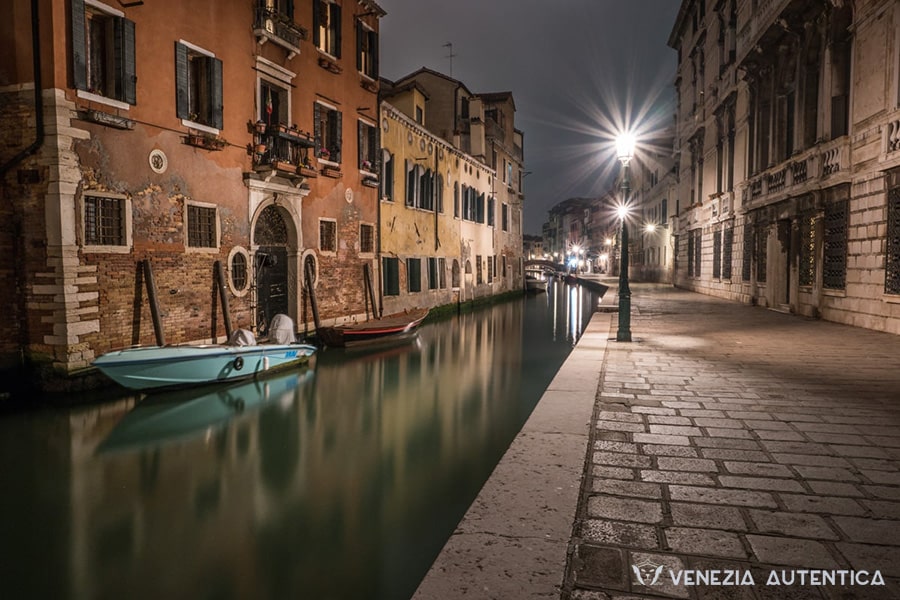
Book an authentic experience in Venice
See all experiencesThe Venetian Way of Life
In some ways, the Venetian way of life has not changed much from how it was at the time of the Serenissima.
In fact, Venetians are still moving by foot most of the time. This helps to preserve the sense of community between Venetians, making it easy to see and greet each other while on errands and maybe stopping for a quick “cichetto” or a glass of wine in the closest wine bar.
When Venetians have a bit of time on their hands, the quickest and easiest way to have some space and liberty is taking their motorboat and enjoying a lovely day in the lagoon.
An alternative is to go to a rowing club to do some Venetian rowing and glide over the shallow waters of the Venetian Lagoon.
Both possibilities reinforce the natural tie between the Venetian citizens and the Venetian lagoon, as it has been for thousands of years.
What is Venice Italy famous for?
That’s a tough question to answer as there are many things Venice is famous for.
Over the centuries, the very dynamic and creative city of Venice has produced landmarks, arts, inventions, celebrities and even words that are known in the entire world.
We chose to organize the answer in a few categories, as you can see below:
Famous Landmarks and symbols of Venice, Italy
For being such a small city, the number of landmarks and iconic elements of Venice known worldwide is impressive. Let’s just name a few:
Saint Mark’s Basilica, Doge Palace, Clock Tower and the Bridge of Sighs in Saint Mark’s Square.
The Rialto Bridge, and Accademia bridge along the Grand Canal.
The Beautiful Basilica di Santa Maria della Salute, Punta della Dogana, the Accademia and Ca’ Rezzonico in Dorsoduro.
Burano’s colourful houses, Murano Glass, and Burano Lace in the Venetian Lagoon.
Gondolas, canals, bridges, and narrow alleys all around Venice.
This list includes only a few of the many spectacular landmarks and elements that many people know about Venice.
Related: Scala Contarini del Bovolo
Famous Venetian words:
You might be surprised to read that, but you’ve been unknowingly using Venetian words and expressions for years. Here are a few:
Ciao
Let’s start with ciao, one of the most known Italian words and regularly also used in other languages.
You won’t believe it, but… ciao has Venetian origins. In fact, at the time of the Serenissima locals used to say “s-ciavo (vostro),” “(your) slave,” as a formal greeting to show a voluntary subjection.
Over time “sciavo” turned into “ciao” and became an informal way to greet in Italian.
Ghetto
“Ghetto” is a Venetian word too, and it indicated an area of Venice in which Jewish people were confined. Since that first “ghetto,” other cities in Europe adopted this solution and used the Venetian word to indicate it.
Ballot Box
“Ballot Box” is a Venetian word, and “great electors” (of the electoral college) is a Venetian concept.
When the government had to elect a new Doge, a very complex system based on choice and a degree of randomness would take place.
The randomness in the selection of the “great electors” was ensured by the use of anonymous golden and silver balls, called “ballotte.”
The great electors that had been nominated would then elect the new Doge.
To be in red
To “be in the red” is also a Venetian expression.
The Ghetto was the place of birth of the first pawnshop. This pawn shop, called “Banco Rosso,” gave out red receipts to those who were bringing their belongings in exchange for money.
Since then, a person who had no money used to go to the “Banco Rosso” and was said to “be in the red.”
Famous Venetians creations that you didn't know were invented in Venice
Some Venetian inventions, such as cultivating the shallow lagoon for salt and the production of transparent glass. They are very well known because, for centuries, they were at the core of the Venetian trading success all across the Mediterranean areas.
However, there are some Venetian inventions that are lesser-known but are still regularly used today.
The first Arsenal
The Serenissima invented the first “Arsenale,” or shipyard, working on an assembly-line basis, which made it possible for Venetians to build a whole warship in one single day.
National Bank
The Serenissima created the Banco di Giro, a public bank that used double-entry bookings and made it possible for traders to pay without actual use of physical money. The Banco di Giro is the first example of a National Bank.
In a city of innovators, the government in Venice protected innovations...
…and this is why the Venetian Government invented copyright.
Every person with a good idea, design or product could apply and copyright their invention.
Copyright gave protection for 10 years and could be renewed.
Venice also invented sunglasses!
Venice is with no doubt the natural birthplace for the first-ever pair of sunglasses. In fact, Venice has long summers and a lot of canals that reflect the intense sunlight in every direction. That can be quite bothersome if you’re out all day on a boat, don’t you think?
Sunglasses were designed and produced in Murano for wealthy Venetian families, and recent tests have proven they were even effective in protecting from UV rays!
As we mentioned before, Venice is the place of birth of the first pawnshop.
Venice created the first coffee houses, dedicated to the joy of coffee and chocolate.
We admit we are curious to know if there are other inventions we don’t know about that are still part of our everyday life!
Famous Venetian food and drinks
Bellini! Carpaccio! Spritz! Baccalà!
Nope, it’s not what we had for dinner at our last party. These are just a few of the most known Venetian creations when it comes to food and drinks.
The Bellini and the Carpaccio have been invented by Giuseppe Cipriani in 1948 and 1950 for the renowned Harry’s Bar in Venice. The notorious drink was named “Bellini” after its colour, which reminded Cipriani of a shade of color often used by the famous painter Giovanni Bellini in its masterpieces. Similarly, the thin slices of raw beef were named “Carpaccio” because the intense red colour of the meat reminded Cipriani of the saturated colours used by the great painter Vittore Carpaccio.
The Venetian cocktail Spritz was born in Venice in the 1920s and became the “Venetian” cocktail by definition in the ’70s. Thanks to marketing and advertising, Spritz’s popularity has dramatically increased since 2008, and it became an official IBA cocktail in 2011.
Baccalà, cod served in a creamy form, is a Venetian invention and an authentic institution in the Venetian culinary tradition for several centuries.
For coffee and chocolate lovers, it is worth mentioning that Venice did not invent coffee, but Venice was the first city to import coffee and to spread its use to the western world. To thoroughly enjoy coffee, Venice was the first city to invent dedicated coffee houses which were specialized in the making of coffee and chocolate drinks.
Renown Arts and Crafts
Over the centuries, Venetians developed and refined several arts and crafts such as mask making, book-binding and the creation of beautiful fabrics. It is, however, two crafts in particular that brought an incredible prestige to the city: the Murano Glass and the Burano Lace.
Murano glass creations became more and more popular throughout Europe thanks to the fantastic works by exceptionally gifted Murano glass masters, capable of creating works of beauty and complexity that were unrivalled anywhere else.
The outstanding Burano Lace and the incredible amount of time needed for the making of each piece made the Merletto incredibly popular amongst the wealthiest royal families of Europe. Born as a fisherman island in the lagoon of Venice, Burano became the European heart for high fashion laces.
Famous Venetians
Over the centuries, many people have lived in Venice. Some Venetians, thanks to their arts, intelligence or deeds have become icons and have given pride to the city.
The most known Venetians worldwide
Worldwide, the most known Venetians are the famous traveller and trader Marco Polo, the daring lover Giacomo Casanova, and the great musician Antonio Vivaldi.
However, there are many other Venetians who have reached fame…
Famous Venetians
All Venetians are proud to mention Elena Lucrezia Cornaro, the first woman ever to graduate from University.
Venice is also the birthplace of Moderata Fonte and Lucrezia Marinelli, precursors of feminism and defendants of women’s rights and values.
Famous Venice Painters
A city as spectacularly beautiful as Venice gave birth to several amazing painters, of course
Some of the most famous painters are Giovanni Bellini, Giorgione (Giorgio da Castelfranco), Tiziano Vecellio, Verone (Paolo Caliari), Tintoretto (Jacopo Robusti), Gianbattista Tiepolo, Canaletto (Giovanni Antonio Canal) and Francesco Guardi.
Famous Venetian sculptors, architechts, writers, and patriots...
Venice is the birthplace of the famous comedy writer Carlo Goldoni, and the patriots Daniele Manin and Niccolò Tommaseo. It was also home to the world-renown editor and humanist Aldo Manuzio who invented punctuation and italic.
Finally, the legendary sculptor Antonio Canova, the architects Baldassare Longhena, Andrea Palladio and Antonio da Ponte, and the famous glass master Angelo Barovier who invented transparent glass were all from Venice.
In case you’re wondering, yes, this is just a shortlist!
As you are reading this article, we imagine you might be coming to Venice in the future. To make it easy for you to have a quality experience of the city while making sure that you are having the greatest impact possible, we’ve been crafting many tools and information. You’ll find them all below. Enjoy!
I'm visiting Venice. Why should I follow your recommendations?
The way you visit Venice has an impact both on the quality of your experience and on Venice itself. Chilling, exploring, shopping, eating and drinking where the locals do, can make a huge impact both on the memories you bring home and on the local economy and community.
Home >> Venice and Venetians >> Venice Explained >> You’re Here
Facts, Curiosities, History of Venice, Italy
More about life in Venice, Italy

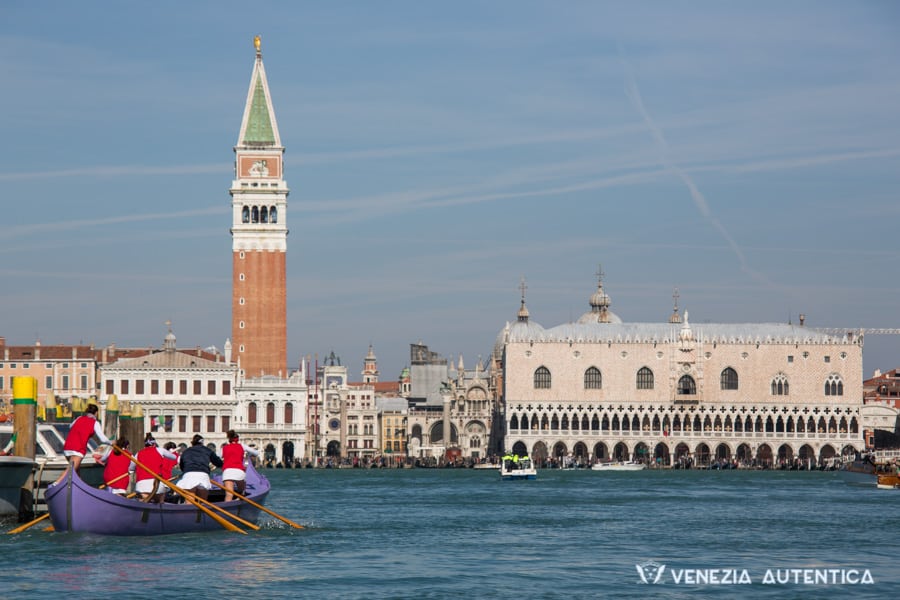
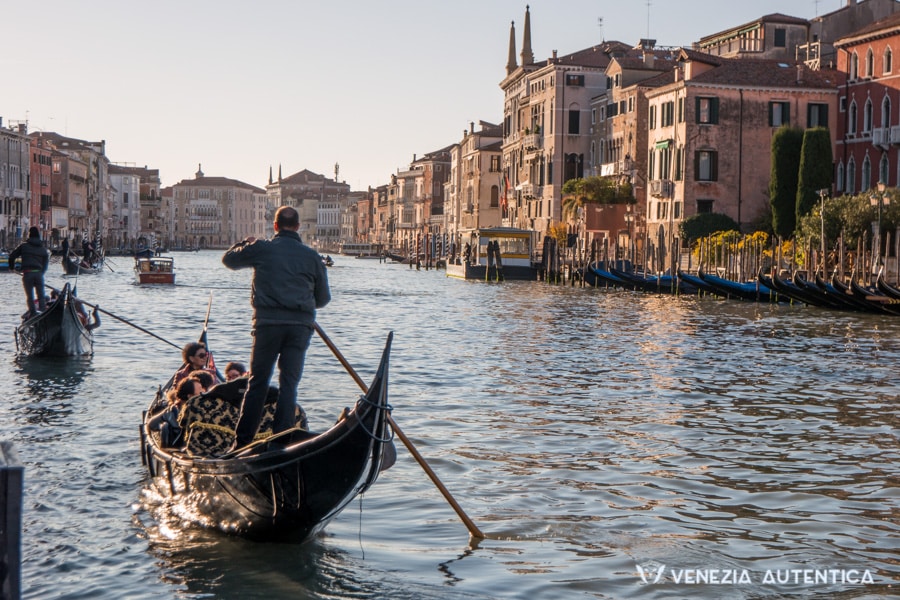
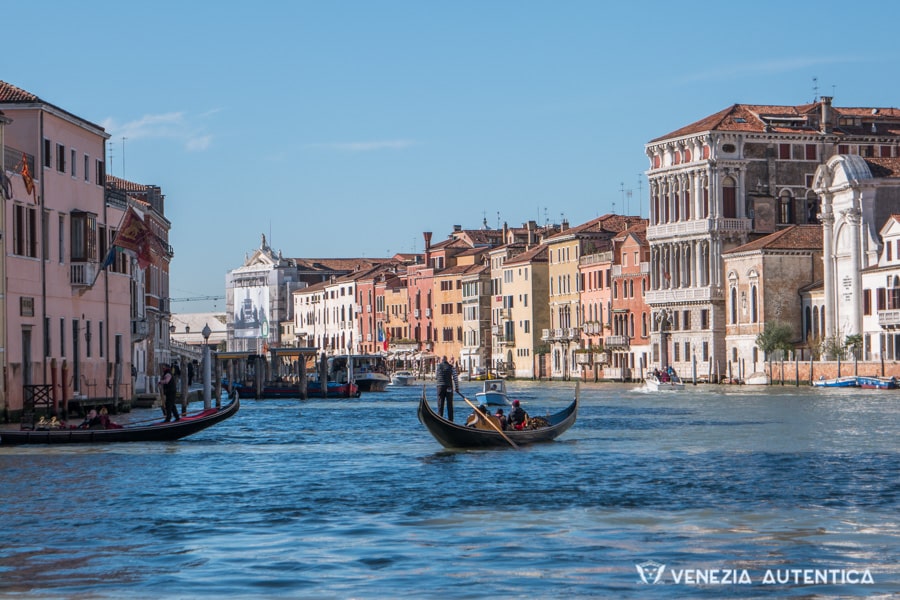
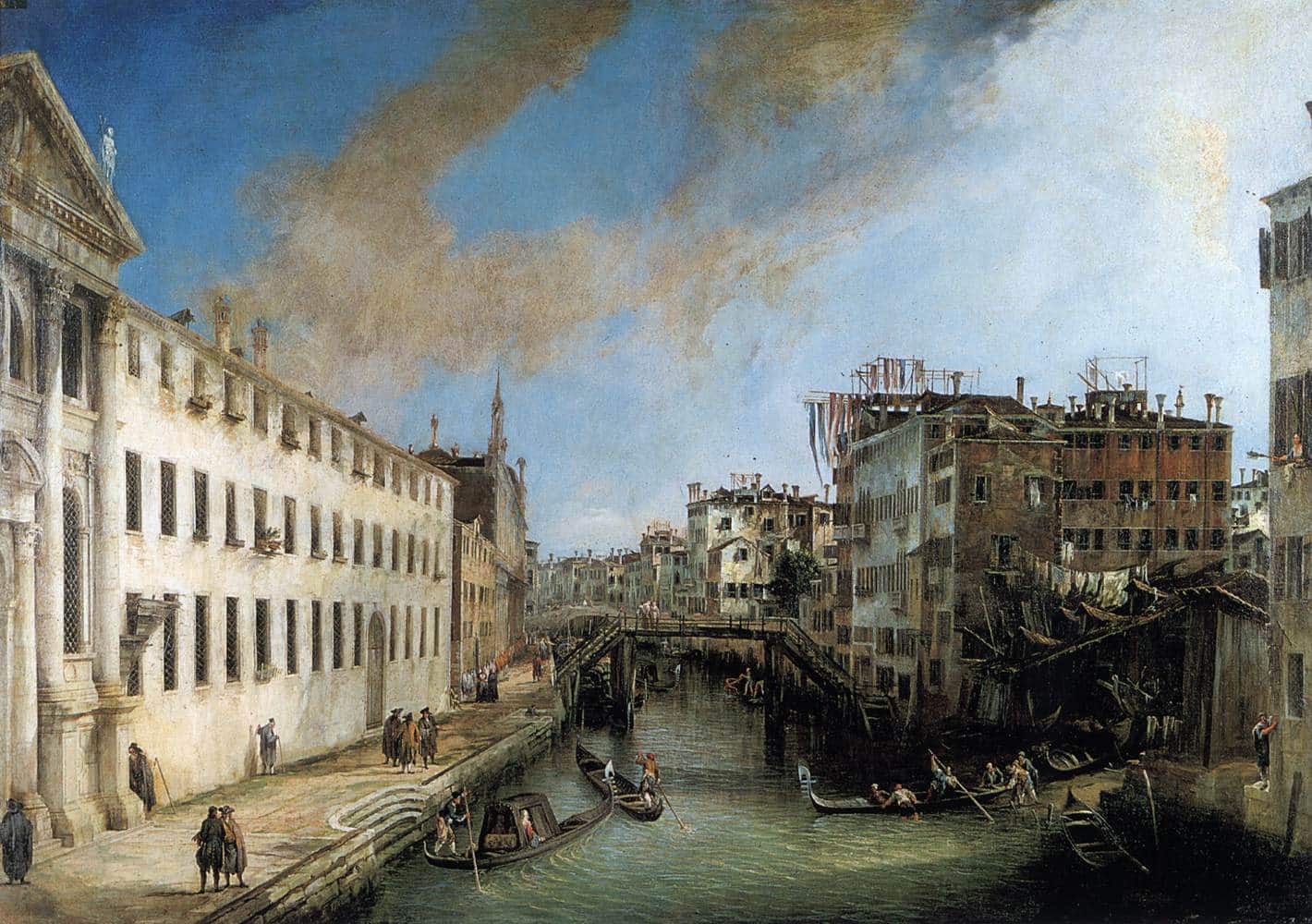

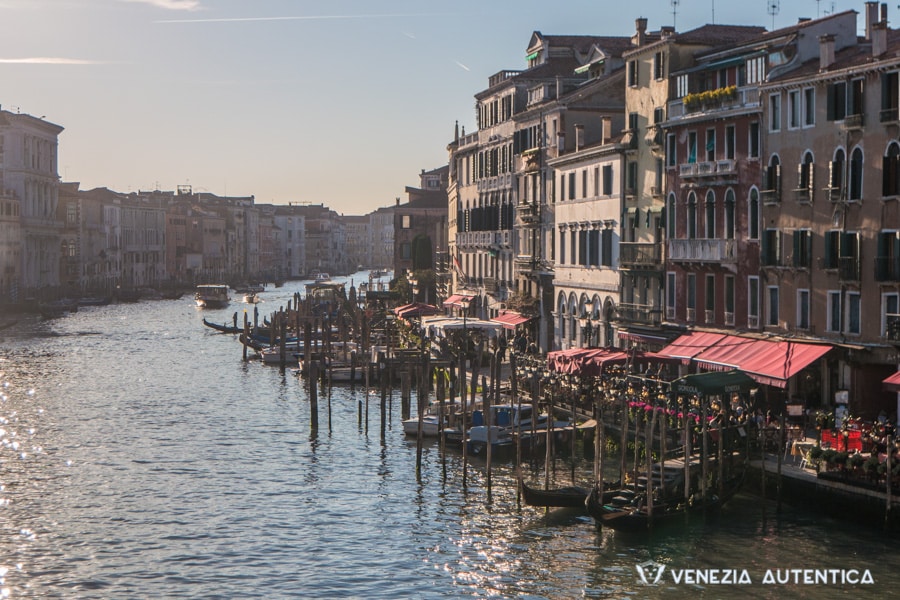
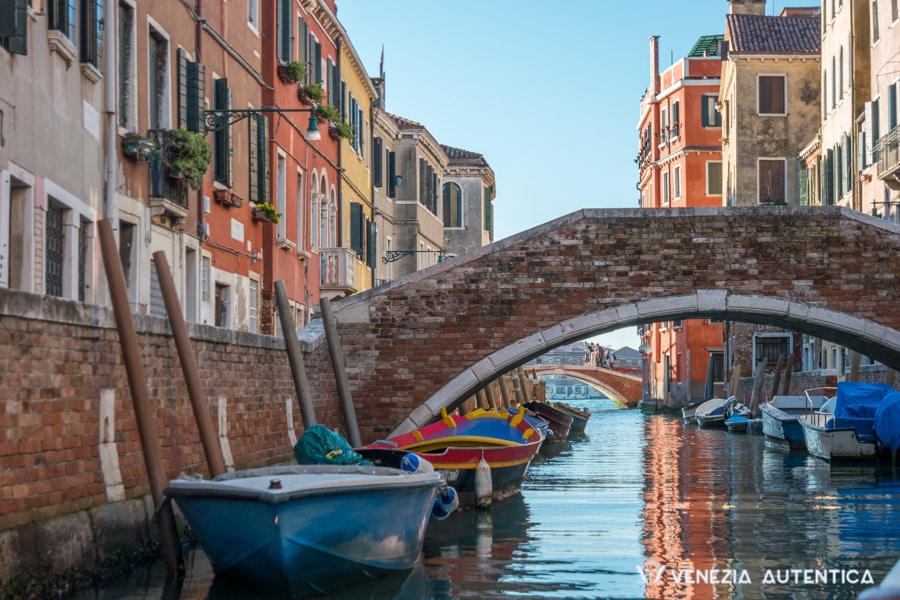
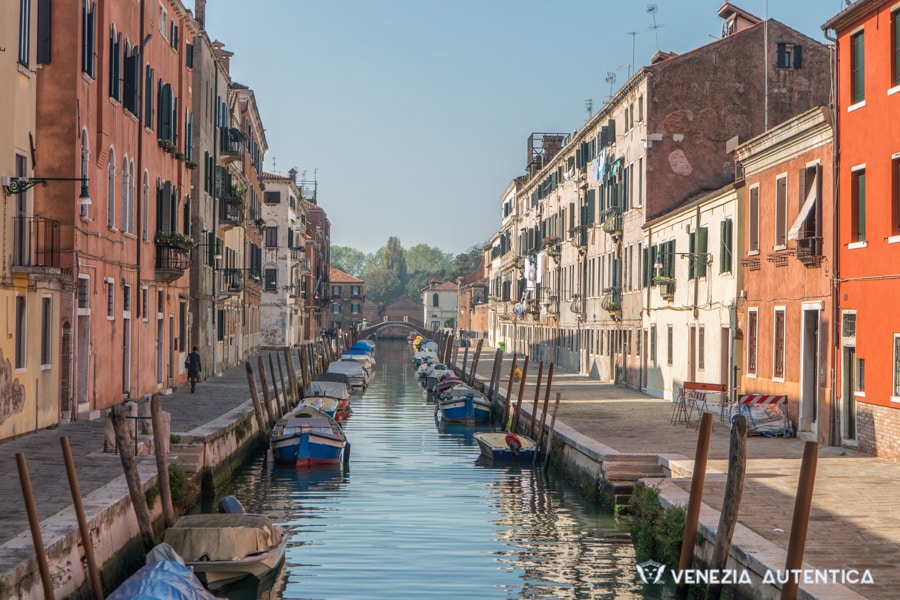
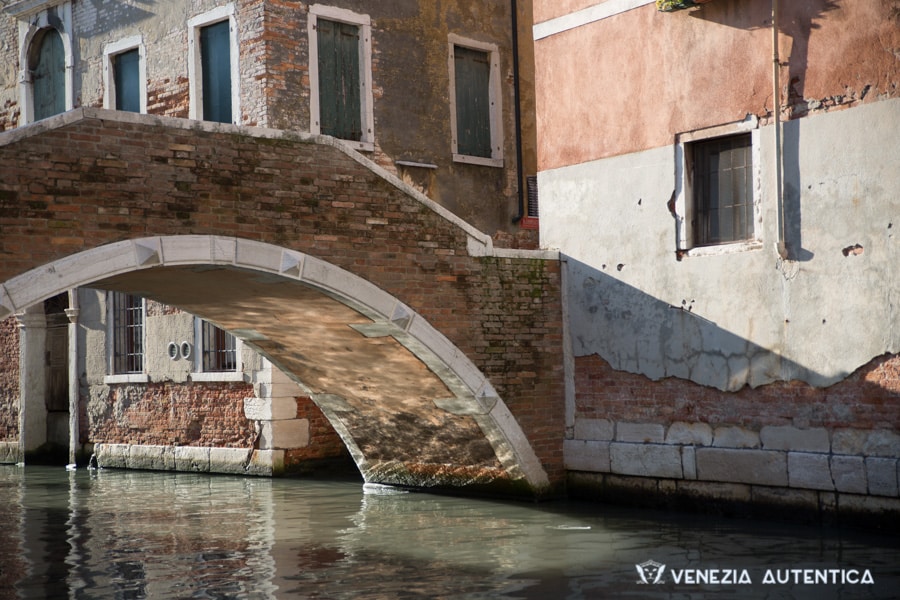

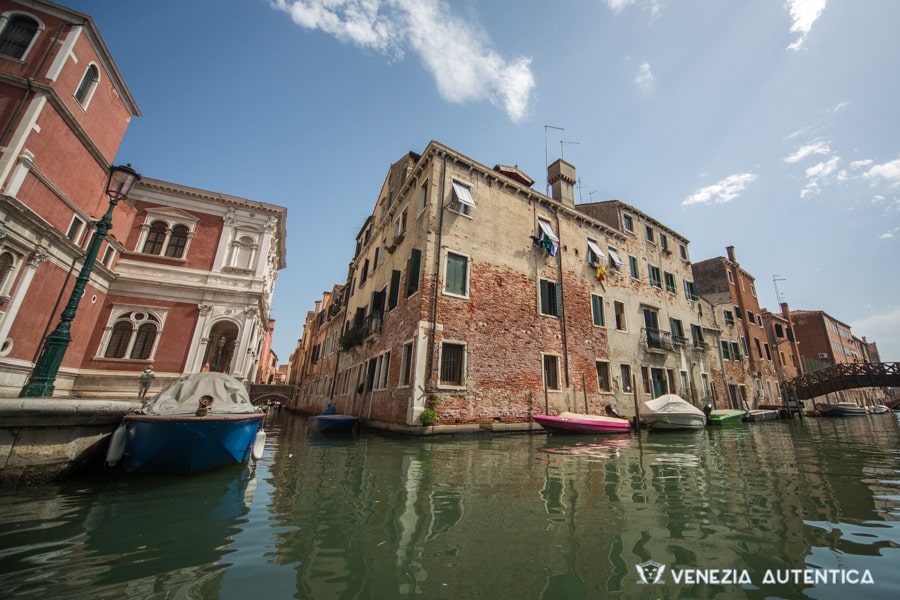
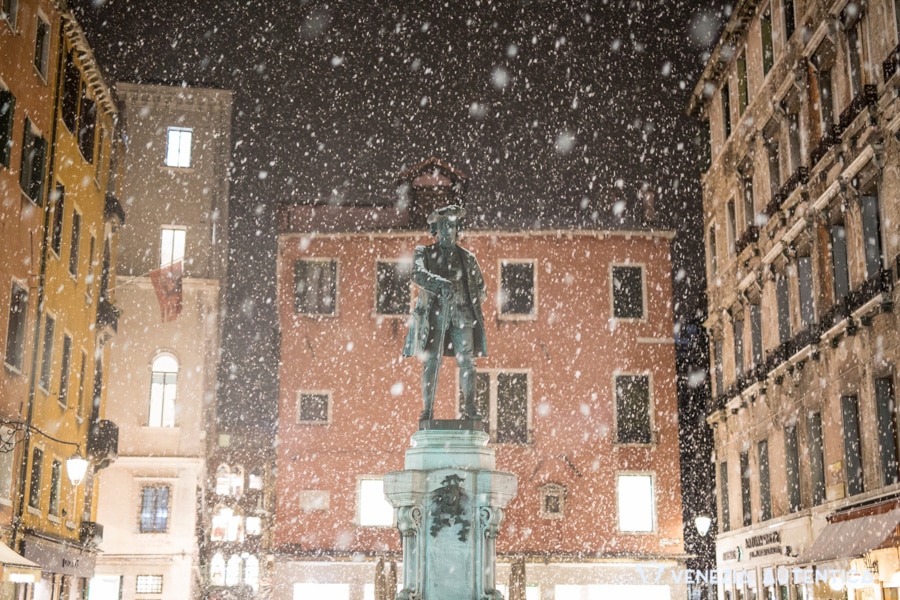
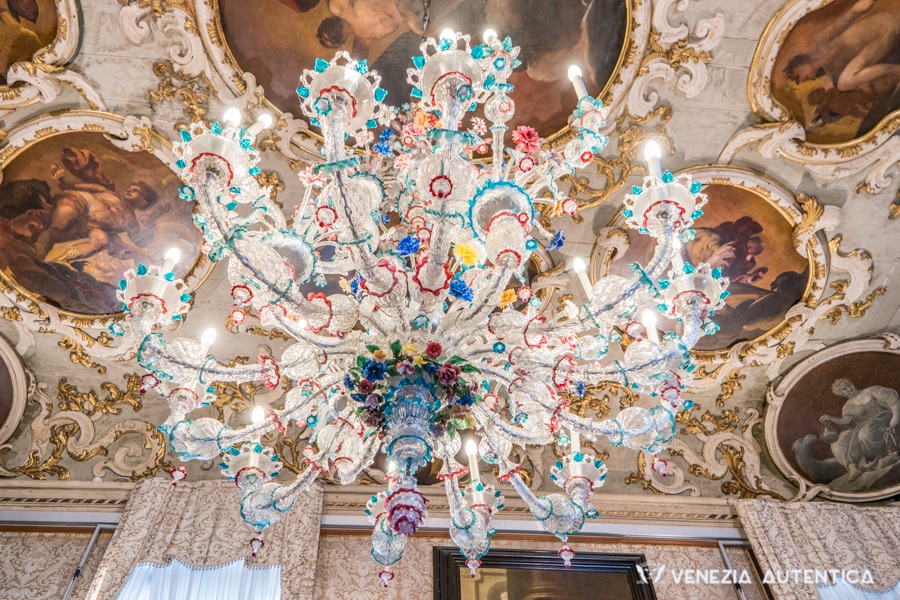
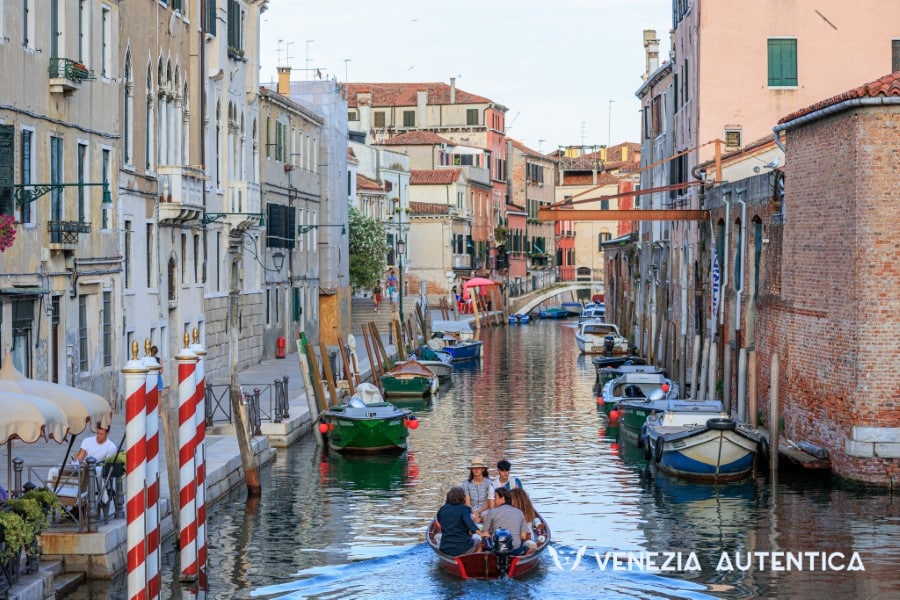

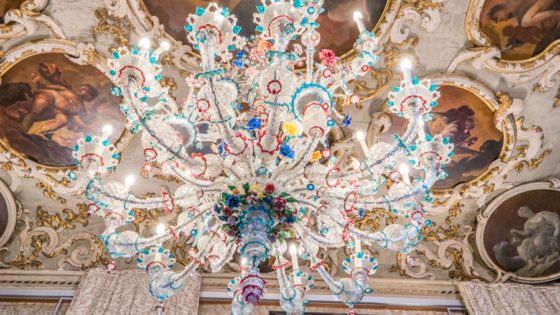
![Everything about the amazing Grand Canal in Venice, Italy [ARTICLE + 360° VIDEO] - Venice - Venezia Autentica | Discover and Support the Authentic Venice Grand Canal in Venice](https://cdn1.veneziaautentica.com/wp-content/uploads/2016/10/Grand-Canal-Venice-560x315.jpg)
![Saint Mark's in Venice: introduction to its amazing Landmarks [Article + 360° VIDEO] - Venice - Venezia Autentica | Discover and Support the Authentic Venice Area Marciana, or Saint Mark's Area, in Venice, Italy](https://cdn1.veneziaautentica.com/wp-content/uploads/2016/11/SAM1911-560x315.jpg)